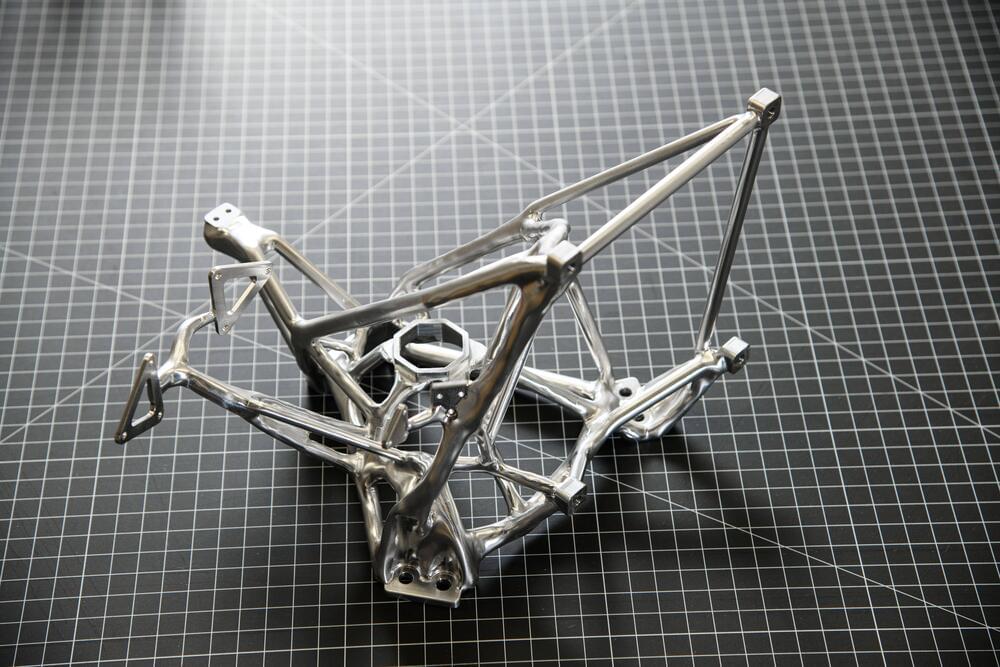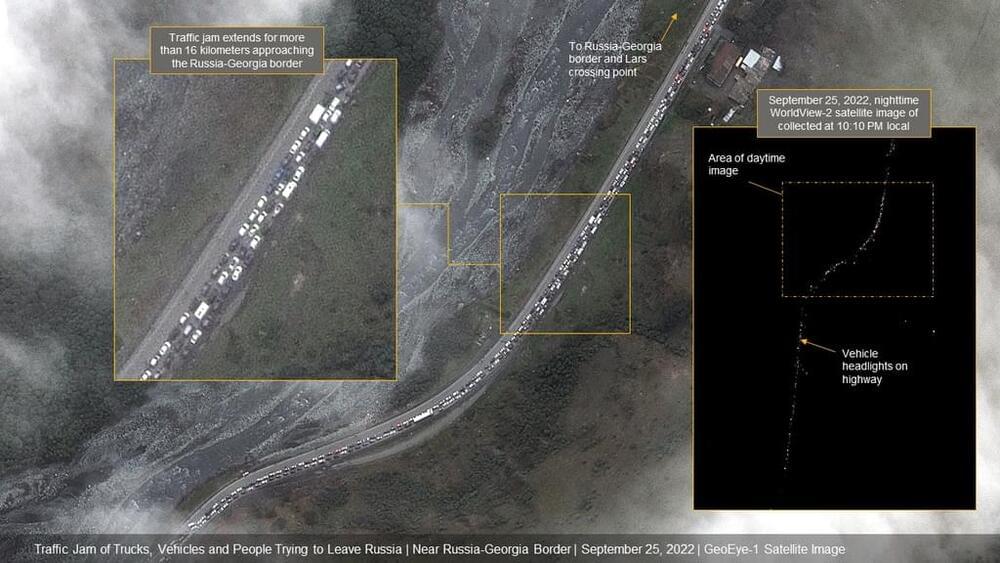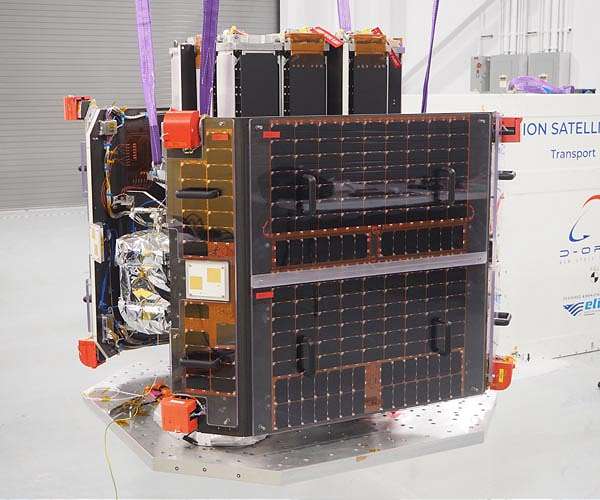Archive for the ‘satellites’ category: Page 46
Feb 12, 2023
Beach erosion: Satellites reveal how climate cycles impact coastlines
Posted by Michael Taylor in categories: climatology, habitats, satellites

Researchers from UNSW Sydney have analyzed millions of satellite photos to observe changes in beaches across the Pacific Ocean. The findings, published in Nature Geoscience today (Feb. 10), reveal for the first time how coastlines respond to different phases of the El-Niño-Southern Oscillation (ENSO) cycle.
ENSO is a natural climate phenomenon that causes variations in sea surface temperatures over the Pacific Ocean. The warming phase, known as El Niño, and the cooling phase, known as La Niña, affect weather patterns across different coastlines depending on the cycle.
Continue reading “Beach erosion: Satellites reveal how climate cycles impact coastlines” »
Feb 11, 2023
Maxar wins contract to provide satellite imagery to US allies
Posted by Saúl Morales Rodriguéz in category: satellites
The five-year contract is worth up to $192 million and will provide high-resolution electro-optical and synthetic aperture radar imagery.
Feb 9, 2023
Tracking ocean microplastics from space
Posted by Saúl Morales Rodriguéz in categories: climatology, satellites
![]()
New information about an emerging technique that could track microplastics from space has been uncovered by researchers at the University of Michigan. It turns out that satellites are best at spotting soapy or oily residue, and microplastics appear to tag along with that residue.
Microplastics—tiny flecks that can ride ocean currents hundreds or thousands of miles from their point of entry—can harm sea life and marine ecosystems, and they’re extremely difficult to track and clean up. However, a 2021 discovery raised the hope that satellites could offer day-by-day timelines of where microplastics enter the water, how they move and where they tend to collect, for prevention and clean-up efforts.
Continue reading “Tracking ocean microplastics from space” »
Feb 2, 2023
D-Orbit launches ION’s first mission into a midinclination orbit
Posted by Saúl Morales Rodriguéz in category: satellites
Space logistics and orbital transportation company D-Orbit launched Starfield, the eighth commercial mission of their proprietary orbital transfer vehicle (OTV) ION Satellite Carrier (ION), and the first one in a midinclination orbit.
The OTV lifted off January 31st, 2023, at 8:15 a.m. PT (16:15 UTC) aboard a Falcon 9 rocket from the Space Launch Complex 4 East (SLC-4E) at Vandenberg Space Force Base in California, and was successfully deployed 57 minutes later into an approximately 340km altitude and 70-degree inclination orbit.
ION is a versatile and cost-effective OTV designed to precisely deploy satellites and perform orbital demonstrations of third-party payloads hosted onboard. After the first commercial mission in September 2020, D-Orbit has completed seven more missions, including one featuring two IONs.
Jan 31, 2023
SpaceX announces Nigerian operation, first in Africa
Posted by Kelvin Dafiaghor in categories: mobile phones, satellites

The Space Exploration Technologies Corporation, SpaceX, on Monday announced that it has commenced the operation of Starlink services in Nigeria, the first African country to receive such.
Starlink is a satellite internet constellation operated by SpaceX launched in 2019. It provides satellite internet access coverage to about 46 countries, which is also targeting the global mobile phone service after 2023.
Continue reading “SpaceX announces Nigerian operation, first in Africa” »
Jan 31, 2023
What Is Wright’s Law
Posted by Eric Klien in categories: business, internet, satellites
Here’s some interesting SpaceX News!
For the last few months, SpaceX has been having trouble launching Starlink satellites, once going almost two months between Starlink launches. The problem wasn’t that SpaceX was launching less often, but that SpaceX had a surge in business. The long-term solution was to go from 61 launches last year to about 100 launches this year. (SpaceX only did 31 launches in 2021, so they are growing rapidly!)
This month was much better for Starlink launches, with 3 this month. The key to squeezing in 3 launches was that SpaceX did 7 launches this month which is a 7 12 = 84 launch rate, definitely higher than last’s years 61 launch rate.
Jan 30, 2023
Everything We Know About Amazon’s New Home Internet Service
Posted by Genevieve Klien in categories: internet, satellites
For years the dream of competition in the world of home internet has been just that; a dream. Now in 2023, we are starting to see it become a reality. Wireless internet from places like T-Mobile and Verizon has come on strong recently. New faster satellite internet from SpaceX, and fiber internet have all expanded recently, meaning many Americans who may have had two options in the past now have 4 or 5 options.
Now Amazon wants to join that list by offering high speed internet from space, similar to SpaceX’s Starlink service.
Here is everything we know about Amazon’s new home internet service:
Jan 25, 2023
Scientists Have a Plan to Turn Earth Into a Giant Observatory
Posted by Shubham Ghosh Roy in category: satellites
Fiber-optic cables stretch across oceans and wind their way underground to handle our communications systems, and scientists think that this vast network of infrastructure could be put to another use: observing Earth’s surface from below.
Specifically, the 1.2 million kilometers (more than 745,000 miles) of existing fiber-optic cable could be combined with satellites and other remote sensing instruments to monitor the entire globe in real time.
Storms and earthquakes could be tracked in this way, the team behind the idea suggests, as well as ships and whales passing through the seas. The network might even have the potential to be used to spot broken pipelines.
Jan 24, 2023
Plasma thrusters used on satellites could be much more powerful than previously believed
Posted by Dan Breeden in category: satellites

It has been believed that Hall thrusters, an efficient kind of electric propulsion widely used in orbit, must be large to produce a lot of thrust. Now, a new study from the University of Michigan suggests that smaller Hall thrusters can generate much more thrust—potentially making them candidates for interplanetary missions.
“People had previously thought that you could only push a certain amount of current through a thruster area, which in turn translates directly into how much force or thrust you can generate per unit area,” said Benjamin Jorns, U-M associate professor of aerospace engineering who led the new Hall thruster study to be presented at the AIAA SciTech Forum in National Harbor, Maryland, today.














